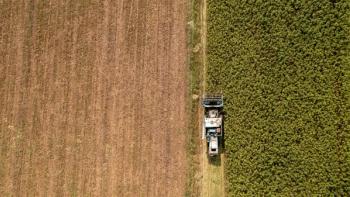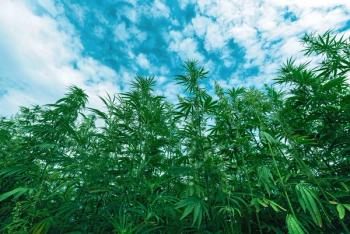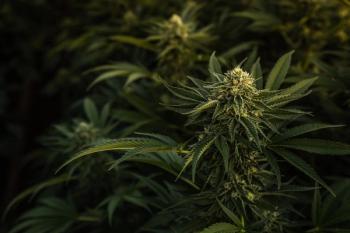
Cannabis Science and Technology
- July/August 2020
- Volume 3
- Issue 6
The Role of Cannabinoids in the Global Fight Against Antibiotic Resistance
A closer look at some of the current in vitro evidence suggesting that cannabinoids possess potent activity against a range of gram-positive bacteria.
Antimicrobial resistance is a critical issue among the global healthcare community. Based on reports from global health authorities and hospitals, the World Health Organization (WHO) has identified 12 pathogens with increased antibiotic resistance, including Methicillin-resistant Staphylococcus aureus (MRSA) (1). In the United States, MRSA infections topped 300,000 every year since 2005, resulting in more than 10,000 deaths and $1.7 billion in healthcare costs in 2017 (2). Similarly, the Canadian Antimicrobial Resistance Surveillance System reported that the rate of MRSA infections within sentinel hospitals increased since 2015 from 2.8 to 3.17 cases per 10,000 patient-days in 2017 (3). The prospect of losing lives to avoidable infections is real, particularly during spikes in healthcare use that may overburden healthcare systems, compromise sanitation practices, and further exacerbate the emergence of antimicrobial resistance. COVID-19 has created such a spike in healthcare use on a global scale, and in preparation for future healthcare crises, novel antibiotic tools need to be developed now to support strained healthcare systems.
Current in vitro evidence suggests that cannabinoids such as tetrahydrocannabinol (THC), cannabidiol (CBD), cannabigerol (CBG), cannabinol (CBN), and cannabichromene (CBC) possess potent activity against a range of gram-positive bacteria including MRSA, as well as gram-negative bacteria when supplemented without membrane penetrating agents (4–6). In particular, CBG presents superior activity in the real-world applications of biofilm inhibition, biofilm eradication, and antibacterial activity at concentrations well below toxic levels that are achievable in topical formulations with utility in over-the-counter and acute care clinical settings (5). Cannabinoids present an opportunity to develop a novel and highly effective antibiotic pipeline. Further in vivo work is required to validate the antibacterial efficacy of cannabinoids when administered orally, intravenously, or through other routes for systemic treatment. Cellular agriculture offers a way to produce pure and consistent cannabinoids for further research and integration into end products for this specific utility (7).
Early Studies Show Effectiveness of Cannabinoids Against Gram-Positive Bacteria
In response to these healthcare challenges, researchers have focused their efforts on evaluating cannabinoids as potential antibacterial agents against both gram-positive and gram-negative bacteria, which have different cell wall structures (Figure 1, click to enlarge). Gram-positive bacteria have a cytoplasmic membrane surrounded by a thick peptidoglycan layer, while the more numerous and varied gram-negative bacteria have three layers, including a thin peptidoglycan layer surrounded by an elaborate outer membrane studded with complex sugars.
One of the first studies in this domain evaluated the antibacterial properties of delta-9-THC and CBD against seven different pathogens that included both gram-negative and gram-positive bacteria (4) (Table I, click to enlarge). This early work suggested that 1–5 µg/mL THC and CBD possess both bacteriostatic (prevent further growth) and bactericidal (kill existing cells) properties against gram-positive bacteria but have no effect on gram-negative bacteria because they are unable to cross the thick bacterial outer membrane unassisted.
These findings were in agreement with more recent research, which utilized in vitro susceptibility models to assess the antibacterial activity of five cannabinoids (THC, CBD, CBG, CBC, and CBN) against gram-positive MRSA (5). In this work, the minimum inhibitory concentration (MIC) required to prevent bacterial growth of THC, CBD, CBG, CBC, and CBN was reported as < 2 µg/mL (Table II). This activity was found to be comparable to several commonly used antibiotics, suggesting that cannabinoids are potent antibacterial compounds when applied directly to the pathogen site, as is the case with topical administration. A separate study reported similar results for the same cannabinoids against a different strain of MRSA (USA300), with the exception of CBC (Table II) (6). The agreement between these two studies serves as promising evidence of the potential that cannabinoids offer as topical antibacterial agents for gram-positive bacteria.
Cannabinoids May Also Inhibit and Eradicate Biofilm Formation
While bacterial growth is a concern for bacterial spread, biofilm formation is regarded as a critical factor contributing to infection duration because of its heartiness in the face of traditional hygiene and subsequent accumulation on surfaces and in reservoirs, particularly in hospitals and other healthcare settings. In this context, one study explored the ability of THC, CBC, CBG, CBN, and CBC to inhibit MRSA biofilm formation, and to eradicate preformed biofilms of MRSA (6). The results indicated that these cannabinoids were able to inhibit biofilm formation, and that this inhibitory activity was correlated with their antibacterial activity as measured by MIC against gram-positive pathogens.
In particular, CBG was identified as the most effective cannabinoid capable of inhibiting 50% of biofilm formation at 0.5 µg/mL. CBG was also able to eradicate preformed biofilms (minimum biofilm eradication concentration of 4 µg/mL) and kill MRSA persister cells (MIC of 5 µg/mL). Furthermore, MRSA did not develop resistance to CBG, even when treated with lethal concentrations of CBG ranging from 2 to 16x MIC and cultured for 15 days, an important finding in the context of antibacterial resistance. Collectively, these findings suggest that the antibacterial activity of CBG may extend beyond topical antibiotic applications and be suited for antibacterial coating applications for medical equipment, such as stents.
With Some Assistance, Cannabinoids Show Promise Against Gram-Negative Pathogens
Gram-negative bacteria are frequently to blame for infections and are often difficult to treat in part because of the protective polysaccharide shell that surrounds their outer lipid membrane. Indeed, eight of the 12 WHO Priority Pathogens previously mentioned are gram-negative. While previous findings suggested that the antibacterial activity of cannabinoids was limited to gram-positive pathogens, a more recent study showed how the coadministration of a commonly used gram-negative antibiotic can improve the antibacterial activity of cannabinoids against gram-negative pathogens (6).
The study determined the effectiveness of CBG, CBN, CBD, CBC, and THC against a laboratory strain of gram-negative E. coli following coadministration of Polymyxin B, a topical antibiotic that disturbs the outer membrane characteristic to gram-negative bacteria and is used in the commercially available topical ointment Polysporin (Johnson & Johnson). In all cases, coadministration of Polymyxin B enabled the cannabinoids to act as effective antibacterial agents against the laboratory strain with MIC values below 1 µg/mL (Table III, click to enlarge). However, the dose of Polymyxin B required to enable this activity varied with each cannabinoid. In particular, CBC and THC required the lowest amount of Polymyxin B to prevent bacterial growth, while all other cannabinoids required twice the amount of Polymyxin B to achieve the same synergistic effect.
In the same study, CBG was selected for further testing against additional gram-negative pathogens given its superior effects against biofilms and persister cells (Table III). Coadministration of Polymyxin B proved to enable CBG’s antibacterial activity against a clinical strain of E. coli, K. pneumonia, P. aeruginosa, and A. baumannii at varying concentrations not exceeding 1 µg/mL.
Cellular Agriculture Offers a Way to Further Understand Antibiotic Cannabinoids
Crucially, the existing pool of antibiotic cannabinoids—together with the barely explored minor cannabinoids—form an extensive and coherent pipeline that awaits development. The current research suggests that cannabinoids are well-suited antibiotic agents when applied topically, particularly against gram-positive pathogens, while action against gram-negative bacteria is enabled by coadministration of a secondary antibiotic.
Ongoing in vitro and in vivo work will undoubtedly further our understanding of the topical and systemic antibiotic properties of cannabinoids; however, it can be very difficult to source high-quality, pure cannabinoid ingredients at exact dosages to meet requirements for this research. Cellular agriculture offers a means to produce consistent, uncontaminated cannabinoid ingredients at scale to keep pace with the anticipated increase in research around antimicrobial use cases and demand by the health and pharmaceutical markets. Further research will undoubtedly cement their utility in the global fight against antibiotic resistance.
References
- World Health Organization, "Global Priority List of Antibiotic-Resistant Bacteria to Guide Research, Discovery, and Development of New Antibiotics" (2017).
https://www.who.int/medicines/publications/WHO-PPL-Short_Summary_25Feb-ET_NM_WHO.pdf . - R.R. Redfield, "Antibiotic resistance threats in the United States." Centers Dis. Control Prev. 148,doi:CS239559-B (2019).
- Public Health Agency of Canada, "Canadian Antimicrobial Resistance Surveillance System – Update 2018" (2018).
https://www.canada.ca/content/dam/phac-aspc/documents/services/publications/drugs-health-products/canadian-antimicrobial-resistance-surveillance-system-2018-report-executive-summary/pub1-eng.pdf . - B. Van Klingeren and A.M. Ten Ham, Antonie van Leeuwenhoek 42, 9–12 (1976).
- G. Appendino, et al., J. Nat. Prod. 71, 1427–1430 (2008).
- M.A. Farha, et al., ACS Infect. Dis. 6, 338–346 (2020).
- Lavvan Inc., "A Primer on the Process of Cannabinoids Derived Through Biosynthesis & Cellular Agriculture" (2020).
https://www.lavvan.com/biosynthesis-primer-download . - G. Appendino, et al., J. Nat. Prod. 71, 1427–1430 (2008).
- M.A. Farha, et al., ACS Infect. Dis. 6, 338–346 (2020).
About the Authors
Alexia Blake is the director of product development at LAVVAN in Markham, Ontario, Canada. Gilad Landan is a senior scientist at LAVVAN in Santa Clara, California. Jeremy Friedberg is the chief science officer at LAVVAN in Guelph, Ontario, Canada. Direct correspondence to Jeremy Friedberg at
How to Cite this Article
A. Blake, G. Landan, and J. Friedberg, Cannabis Science and Technology 3(6), 40-43 (2020).
Articles in this issue
over 5 years ago
A Proposed Representative Sampling Plan for Hemp Growsover 5 years ago
Exploring the Chemical Makeup of Cannabis Extract by Methodover 5 years ago
The First Family of Cannabinoid Medicine: The Knox Docsover 5 years ago
Distinguishing Hemp from Marijuana by Mid-Infrared Spectroscopyover 5 years ago
America’s Heartland Tackles Hemp Cultivation with Educationover 5 years ago
From the Editor: Behind Our RedesignNewsletter
Unlock the latest breakthroughs in cannabis science—subscribe now to get expert insights, research, and industry updates delivered to your inbox.





